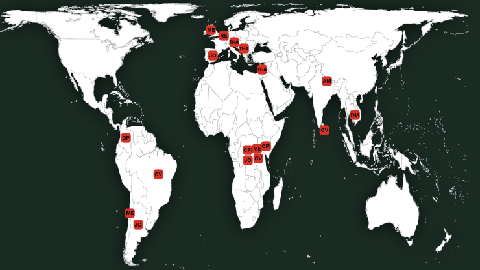Global conflict and peacebuilding processes analysed

The report registers a decrease in armed conflicts when compared to the former year (from 38 in 2012 to 35 in 2013), but warns of the high levels of violence in more than 25% of the conflicts and the possible appearance of more conflicts in 2014.
02/07/2014
The UAB School for a Culture of Peace publishes its report on conflicts, human rights and peacebuilding, Alerta 2014!, in which it analyses the evolution of conflicts and peacebuilding processes taking place around the world, as well as the effects these situations have in relation to gender. The School for a Culture of Peace has also published, in collaboration with Dr Vicenç Fisas, UNESCO Chair Professor on Peace and Human Rights, the Peace Process Yearbook 2014, where 50 conflict scenarios currently undergoing peace negotiations are analysed.
With the publication of this document, the authors aim to provide data and an analysis of the situations with the aim of identifying alarm factors as well as possibilities for reconciliation. The report is addressed to those responsible for taking political decisions, those with the ability to intervene and those who can politically, mediatically and/or academically disseminate this information.
According to the report, the main cause of armed conflicts is "the opposition to the government or the system of a country and the claims for identity and self-governance, although the fight for the control of resources or the territory are also important factors”. These situations of tension exist mainly – and most severely – in Africa (13) and Asia (11). For this reason, the UN increased its international peace maintenance missions in these two continents. There were five armed conflicts in the Middle East and another five in Europe, while the Americas was the area with the lowest number: one.
One of the most visible consequences of these situations is forced migrations, which have reached their worst levels since the end of the twentieth century: 45.2 million people were forced to leave their homes and of these, 15.4 million became refugees. The remaining 28.8 million people were forced to relocate to other parts of their country.
The document also highlights severe gender inequalities in 75 countries. Sexual violence continues to be a main weapon of war, together with gender violence and the increase in participation of women in these conflicts. Also on the theme of gender perspective, the fourth chapter, “The Gender Dimension in Peacebuilding”, analyses the steps taken by civil society to increase the participation of women in peace negotiation processes.
The last two chapters focus on 2014, first by analysing opportunities for peace and second, the possible risk scenarios. The report analyses seven possibilities for peace (Iran, Colombia, the Philippines, Indonesia, Serbia, Russia, and the Democratic Republic of the Congo), given the positive advances made in negotiations. The chapter on risks examined eight scenarios whose conditions could worsen or turn into points of even more serious instability and violence in 2014.
Alerta! 2014: Report on conflicts, human rights and peacebuilding, was published by Icaria and can be viewed in English at the web of the School for a Culture of Peace.
Alerta! 2014: Report on conflicts, human rights and peacebuilding, was published by Icaria and can be viewed in English at the web of the School for a Culture of Peace.
More information:
School for the Culture of Peace